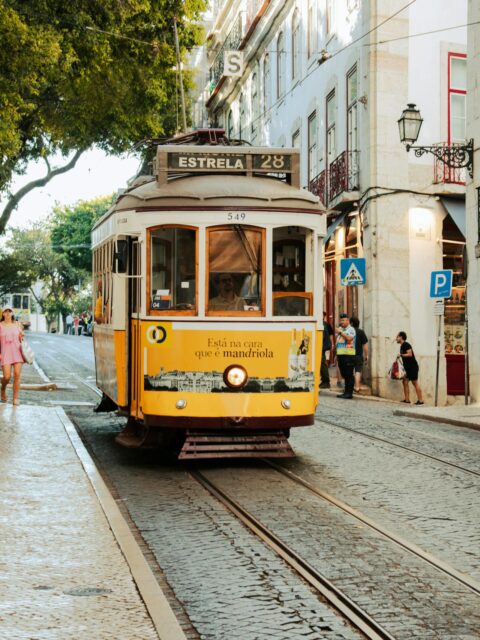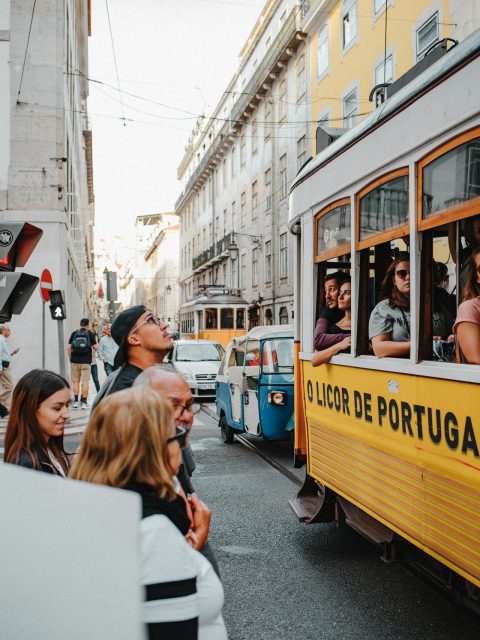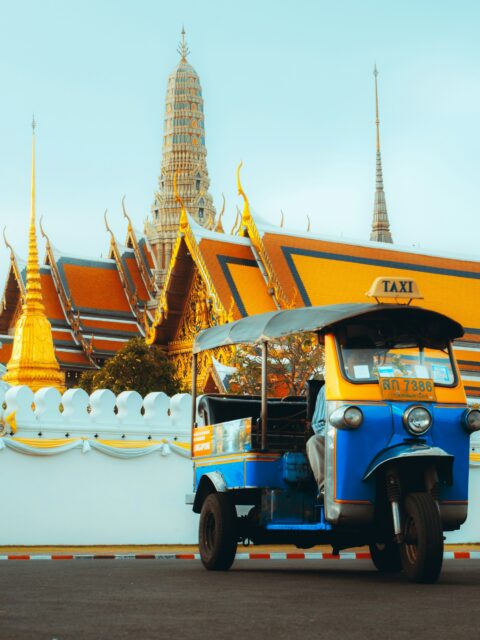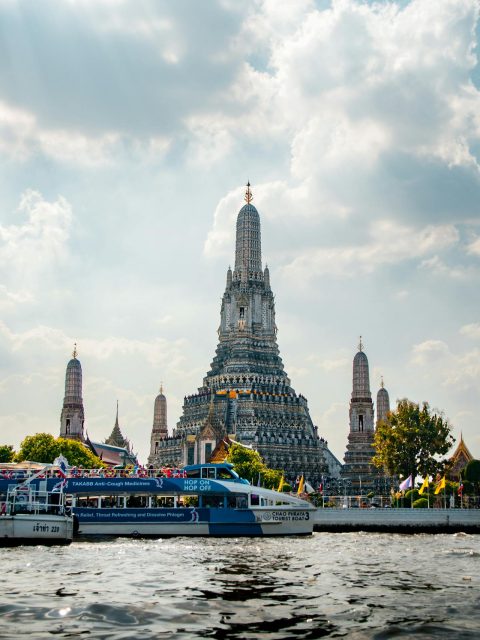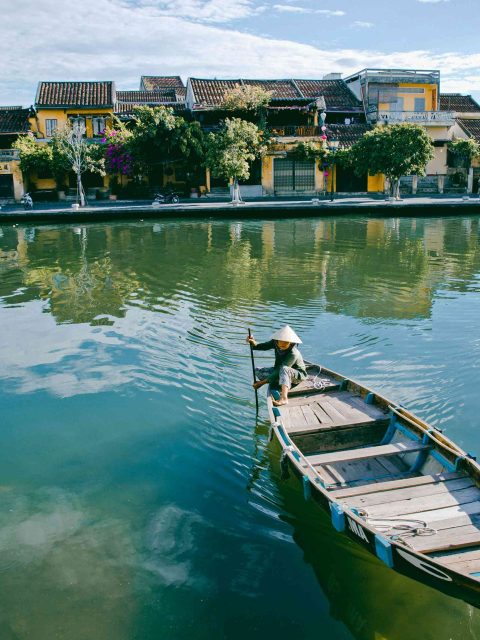15 Best Things To Do in Cusco, Peru
Cusco is an essential stop for anyone exploring Peru. As the historical heart of the Inca Empire, it stands out as one of the most intriguing destinations in South America. Whether you’re fascinated by ancient ruins or modern culture, you’ll find plenty of best things to do in Cusco Peru to suit your travel style.
From its rich archaeological sites to its vibrant streets full of life, Cusco offers a diverse range of experiences. It’s also the gateway to the world-famous Machu Picchu, making it a key destination for any traveler. When I first arrived, I was surprised by how much there was to explore – this Cusco Peru travel guide will ensure you don’t miss any must-see spots.
Take it from me: there’s a lot more to Cusco than you might expect. Let this guide lead you to the very best activities and attractions the city has to offer.
Chapters
- 15 Best Things to Do in Cusco Peru
- 1. Take a Free Walking Tour
- 2. Plaza de Armas
- 3. Cathedral of Santo Domingo – Cusco Cathedral
- 4. Iglesia de la Compañía de Jesús
- 5. Museo Inka
- 6. Qoricancha or the Convent of Santo Domingo
- 7. Sacsayhuamán
- 8. San Pedro Market
- 9. Dining in Cusco
- 10. See the Last Supper Painting…With a Twist
- 11. Relax and Acclimatize
- 12. Day Trips: Visit Vinicunca, or Rainbow Mountain
- 13. Visit the Sacred Valley
- When to Go
- Where to Stay in Cusco
- How to Get Around Cusco
- Safety Tips for Cusco
- How to Get to Cusco, Peru
15 Best Things to Do in Cusco Peru
At an impressive altitude of 3,400 meters, Cusco may quite literally take your breath away – but there’s so much more to this city than its high elevation. As the former capital of the Inca Empire, Cusco is brimming with fascinating history, culture, and unforgettable experiences.
In the time of the Incas, Cusco was a hub for celebrations and festivities – and they sure knew how to have a good time. Today, the city remains a vibrant destination for travelers, combining the charm of ancient ruins with the energy of modern life. Alongside Machu Picchu, Cusco is one of the most significant Incan heritage sites, and it’s truly a place that should be on everyone’s Peru travel itinerary.
Nowadays, Cusco has become a melting pot for adventurers, tourists, and friendly locals alike. Whether you’re here for the history, the lively atmosphere, or the chance to connect with people from around the world, Cusco is a must-visit spot in Peru.
1. Take a Free Walking Tour
One of the best ways to get a feel for Cusco is by joining a free walking tour. These tours give you a great introduction to the city, guiding you through its historical streets while sharing fascinating insights into the ancient Quechua culture and history. Plus, it’s a great way to get your bearings and plan your itinerary for the next few days.
During my time in Cusco, I joined a walking tour that offered an excellent overview of the city’s must-see spots. It’s a great way to kick off your exploration, and I highly recommend checking out the available options to find one that fits your interests.
2. Plaza de Armas
When planning your best things to do in Cusco Peru, the Plaza de Armas is a perfect starting point. This central square is not only the bustling heart of the city but also home to several important landmarks, including the magnificent Cusco Cathedral.
Built by the Spanish, the Plaza de Armas stands out with its grand design, complete with well-maintained gardens and wide, inviting walkways. Interestingly, the current plaza sits on the site of the original Inca square, which was once twice as large. While most of the Inca structures were replaced, you can still spot remnants of their ancient architecture if you pay close attention.
The Plaza de Armas is a place where history and modern life blend seamlessly, making it a must-visit for anyone exploring Cusco.
3. Cathedral of Santo Domingo – Cusco Cathedral
Standing majestically on the Plaza de Armas, the Cusco Cathedral is one of the most prominent landmarks in South America. Its grand size and impressive architecture make it impossible to miss as it towers over the square.
Construction of the cathedral began in 1559 under the Spanish conquerors, and while its design is distinctly Spanish, there are several unique features that reflect Cusco’s rich Inca heritage. Interestingly, some of the stones used to build the cathedral were taken from the ancient Inca site of Sacsayhuamán, adding an intriguing layer of history to the structure.
Inside, you’ll find a fascinating blend of Inca and Catholic imagery. For instance, the Inca goddess Pachamama (Mother Earth) can be seen alongside depictions of the Virgin Mary. Some might say the interior is a bit extravagant with its abundant use of gold, but it’s undoubtedly a sight worth
4. Iglesia de la Compañía de Jesús
When it comes to religious buildings, Cusco certainly doesn’t fall short. While I’ve tried to keep the number of churches on this list to a minimum, the Iglesia de la Compañía de Jesús is definitely one that should not be missed.
Located right next to Cusco Cathedral, this Jesuit church is a striking example of baroque architecture. The Jesuits built it with the aim of rivaling, and possibly even surpassing, the grandeur of the Cathedral itself. In fact, the situation stirred up quite a controversy – the Cathedral’s archbishop was so offended that he took his complaints all the way to the Pope. Although the Pope agreed, by the time his decision reached Cusco, the church was nearly complete, leaving little to be done.
It’s quite fascinating to think about the level of rivalry between these Christian institutions! Deciding which of these magnificent structures wins your admiration is certainly one of the best things to do in Cusco Peru.
5. Museo Inka
Just a block north of the Plaza de Armas, you’ll find the charming yet slightly old-fashioned Museo Inka, also known as the Admiral’s House. Originally owned by Admiral Francisco Aldrete Maldonado, this building has survived two major earthquakes in 1650 and 1950.
Thanks to careful restoration efforts, the museum now stands as one of the finest examples of colonial architecture in the city. While it may not compete with the modern museums of today, there’s something undeniably charming about the Museo Inka, and it’s rightfully included in nearly every list of things to see in Cusco.
Inside, the museum offers a fascinating insight into the history of the Inca Empire – an essential stop for anyone spending time in this part of Peru. Among the more unique exhibits are the eerie skulls of ancient brain surgery patients, a sight that may not appeal to everyone.
For those looking for something a bit lighter, the museum also features rooms filled with Inca artifacts and a beautiful courtyard where you can watch local women demonstrating their traditional weaving techniques.
6. Qoricancha or the Convent of Santo Domingo
When it comes to ruins in Cusco, few can rival the significance and beauty of Qoricancha. If you only have time for a couple of visits, make sure this is at the top of your Cusco itinerary – it’s undoubtedly one of the best places to visit in Cusco.
So, what makes Qoricancha so special? Simply put, it’s a fascinating blend of Spanish Colonial architecture built directly over the remnants of an Inca temple. The result is a unique combination of two very different styles.
Originally, Qoricancha had six main structures dedicated to the worship of the Sun, Moon, Stars, Lightning, and Rainbows, along with a residence for the Inca priests. The name Qoricancha translates to “The House of the Sun,” and it was considered the most important temple of the Inca Empire. At its peak, the temple would have been covered in sheets of gold, highlighting its sacred status.
Unfortunately, much of the gold and treasure was looted by the Spanish conquerors, who later built the church and convent on the same site. Despite this, many parts of Qoricancha’s original Inca architecture remain, and the contrast between the grand Inca stonework and the ornate Spanish church is truly captivating. You can still admire the original imposing walls within the church, a testament to the resilience and craftsmanship of the Inca builders.
7. Sacsayhuamán
Just outside the city of Cusco lies the awe-inspiring site of Sacsayhuamán, a masterpiece of Inca stonework. While much of the original structure was dismantled by the Spaniards for building materials, what remains is still an incredible testament to the scale and craftsmanship of this ancient fortress.
The massive stone blocks are so precisely cut that, even without mortar, they fit together perfectly. Many believe that Sacsayhuamán was once a temple dedicated to the sun, and its capture by the Spanish marked a significant turning point in the decline of the Inca Empire. Today, the site continues to draw thousands of visitors each year, particularly during the Inti Raymi festival, which celebrates the sun.
Visitors can explore the zigzagging stone walls – believed to represent the teeth of the puma-shaped city of Cusco – and the stone benches that historians believe were once the throne of the Inca rulers.
To visit Sacsayhuamán, you’ll need the Boleto Turístico, which grants access to 15 other Cusco attractions for 130 sol (£30). It’s a must-see for anyone looking to fully understand the architectural genius of the Inca civilization.
Hours: 7am-5:30pm
8. San Pedro Market
Just a short walk from Plaza de Armas, San Pedro Market is Cusco’s bustling center of local life and commerce. It’s undoubtedly one of the best things to do in Cusco Peru, and whether you visit in the morning or afternoon, you’ll want to spend some time exploring this vibrant spot.
From the raw meat stalls to the 30+ juice stands offering freshly squeezed juices from a variety of local fruits, there’s something for everyone. The market is filled with energy, and competition among vendors is fierce – sometimes it feels like the loudest shout gets the most customers, adding to the lively, almost chaotic atmosphere.
San Pedro Market isn’t just a great spot for fresh produce, but also the perfect place to shop for souvenirs. You’ll find everything from magnets and pens to colorful, handmade pachamama dolls that make for memorable gifts for friends and family.
Address: Cascaparo, Cusco 08000, Peru
Hours: 6am-8pm
9. Dining in Cusco
Exploring Cusco’s many attractions can be exhausting, so it’s important to take time to refuel. One of my most memorable meals in Cusco was when I stumbled upon a small, unassuming restaurant and ordered rocoto relleno – a stuffed chili pepper dish. It was absolutely incredible!
Peruvian cuisine is known for its unique flavors and a variety of traditional dishes worth trying. In Cusco, some local specialties include dishes made with alpaca and the infamous guinea pig, or cuy. If you’re feeling adventurous, this is your chance to try it! And don’t forget to indulge in the local chocolate and coffee, which are also fantastic.
One restaurant you shouldn’t miss in Cusco is the Inca Grill. Located right on the Plaza de Armas, it offers not only delicious food but also excellent people-watching opportunities. It’s the perfect place to take a break from your sightseeing.
If you’re ready to try cuy, one of Peru’s delicacies, the best place to do so in Cusco is Kusikuy. This beautifully decorated, family-owned restaurant has gained a reputation for serving some of the best guinea pig in the city. Don’t be put off by the idea – guinea pigs were originally raised for food, and the meat is higher in protein and lower in cholesterol than traditional meats like chicken or pork.
Address: Amargura, Cusco 08000, Peru
Hours: 10am-10pm (Closed on Sundays)
10. See the Last Supper Painting…With a Twist
One of the must-see artworks in Cusco can be found in the Cathedral Basilica, where you’ll encounter some of Peru’s most famous paintings. The standout piece is by Peruvian artist Marcos Zapata, and it offers a unique twist on the classic Last Supper scene.
In this rendition, Jesus and his disciples are not feasting on bread and wine but enjoying a traditional Peruvian dish – cuy, or roasted guinea pig. This quirky detail makes the painting a fascinating blend of religious symbolism and local culture.
If you’re intrigued by unusual or distinctive art, this is definitely a stop you can’t miss during your visit to Cusco. It’s an unforgettable Peruvian take on a well-known image!
11. Relax and Acclimatize
You might wonder how “relaxing” can be considered one of the best things to do in Cusco Peru, but trust me – in this city, it’s essential. Cusco is located at a high altitude, and many visitors need time to adjust in order to avoid altitude sickness.
With so many things to do in Cusco, it’s tempting to pack your itinerary full, but it’s important to take it slow, especially in the first couple of days. Don’t overdo it – give your body the time it needs to acclimatize.
Use this downtime to unwind at a local coffee shop or perhaps sample some of Peru’s surprisingly good wines. Taking it easy will help you enjoy the rest of your trip even more, and your body will thank you for it.
12. Day Trips: Visit Vinicunca, or Rainbow Mountain
One of the most iconic day trips from Cusco is a visit to Vinicunca, commonly known as Rainbow Mountain. This breathtaking destination has gained massive popularity in recent years thanks to viral social media posts, and for good reason – it’s truly unlike anything you’ve ever seen.
Before my trip, I prepared myself for a challenging hike, as the trail leads up to a staggering 5,100 meters in altitude. With my hiking boots laced up, I set out on a day hike to see this incredible natural wonder.
While the trek was demanding and the tour a bit rushed, standing in front of the vibrant colors of Rainbow Mountain made it all worthwhile. If you’re looking for an unforgettable experience, this is definitely one of the best things to do around Cusco.
13. Visit the Sacred Valley
The Sacred Valley is undoubtedly a popular tourist destination, but despite the crowds, it’s a place well worth visiting. Nestled between jagged mountains and awe-inspiring Incan ruins, the valley offers some of the most stunning scenery you’ll encounter in Peru.
While many travelers opt for a bus tour to explore the valley, a friend and I decided to take the local colectivos. It was a fun way to experience how locals travel between cities, but I have to admit it wasn’t the most efficient method for getting from place to place.
Looking back, I think splurging on a private taxi for around $100-120 for the entire day would have been a better choice. It would have allowed us to visit all the sights at our own pace and enjoy the Sacred Valley on our own schedule.
When to Go
If you’re planning to spend a lot of time outdoors or visit Machu Picchu, the best time to visit Cusco is during the dry season, which runs from April to October. However, keep in mind that the high season for tourism is from June to August, when the crowds are at their peak. For a more relaxed experience, the ideal time to visit would be either April-May or September-October, when you can enjoy pleasant weather without the tourist rush.
Where to Stay in Cusco
Luxury
For those seeking the height of luxury, Hotel Monasterio is an exceptional choice. Housed in a beautifully renovated 16th-century monastery, which was originally built on the site of an Inca palace, this hotel offers a unique blend of history and elegance. Though it’s on the pricier side, the experience is well worth the splurge.
Book Now
Mid-Range
If you’re looking for a luxurious stay without stretching your budget too much, Inkaterra La Casona is the perfect option. Located in the heart of Cusco’s historic center, it’s just a short walk from the main attractions. The rooms are spacious, blending modern comfort with historic charm.
Book Now
Budget
For travelers on a budget, The Point Hostel is an excellent choice. It’s a social, lively spot perfect for meeting fellow travelers, and for those past the dorm stage, private rooms are available. The hammocks in the hostel’s garden are perfect for stargazing or relaxing with a good book. Plus, the staff are always ready to provide recommendations on the city’s nightlife, ensuring there’s always something fun to do.
Book Now
How to Get Around Cusco
Cusco is an incredibly walkable city, and walking is often the best way to get around and explore its charming streets. Most of the main attractions are within easy walking distance of each other, making it convenient to get from place to place on foot.
If you need to get somewhere a bit further, taxis are readily available in most central areas. A taxi to or from the airport will usually cost between 20-30 soles, which is quite reasonable.
For trips to nearby cities like Ollantaytambo in the Sacred Valley, you can take a local bus or a colectivo (shared taxi). These are great options for budget-friendly transportation to explore the surrounding areas.
Safety Tips for Cusco
Cusco is located at a high altitude of 3,400 meters (11,100 feet), which can make breathing difficult, especially if you’re arriving from sea level. It’s a good idea to consult with your doctor before your trip and take precautions to prevent altitude sickness. Staying hydrated, avoiding alcohol, and taking it easy for the first couple of days can help your body adjust.
As with any major city, it’s important to stay aware of your surroundings and keep your valuables out of sight. While Cusco is generally a safe place to visit, it’s always a good idea to stay vigilant and avoid any unnecessary risks.
How to Get to Cusco, Peru
If you’re arriving in Peru from an international destination, your journey will likely begin in Lima, as most international flights land there. From Lima, the easiest way to get to Cusco is by taking a domestic flight, which is both quick and convenient.
For those who prefer a more scenic route, Peru Hop buses offer a fantastic and affordable option for exploring the country while traveling between destinations. It’s a great way to see more of Peru’s landscape and culture along the way.
Additionally, if you’re coming from Ecuador or Bolivia, there are land border crossings where you can enter Peru and make your way to Cusco by bus or car.
Have you visited Cusco? What other things to do in Cusco would you recommend?


